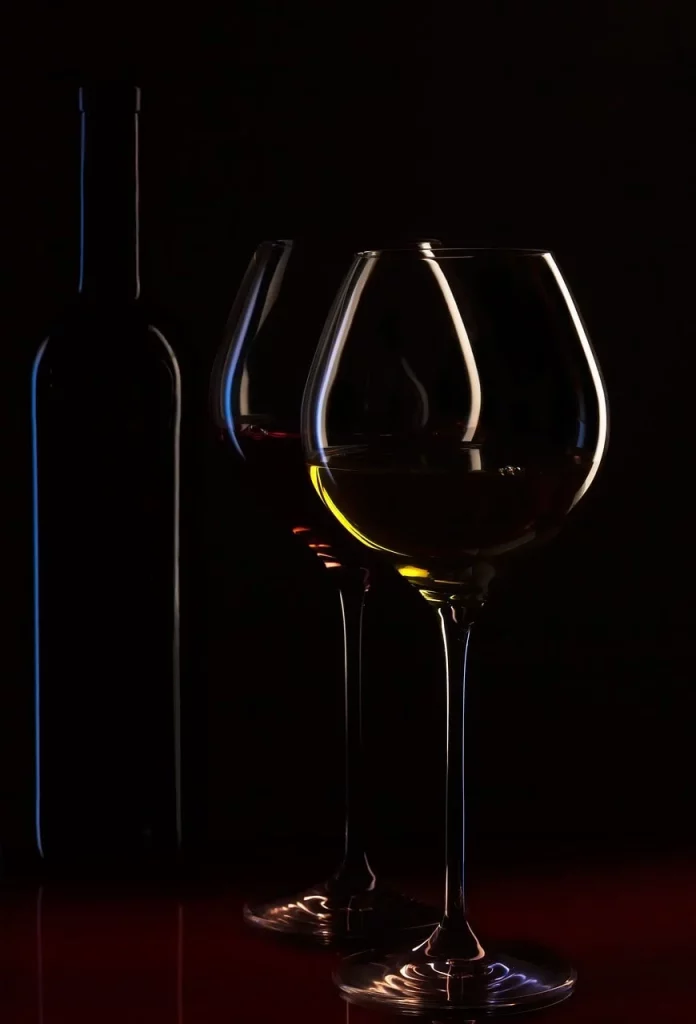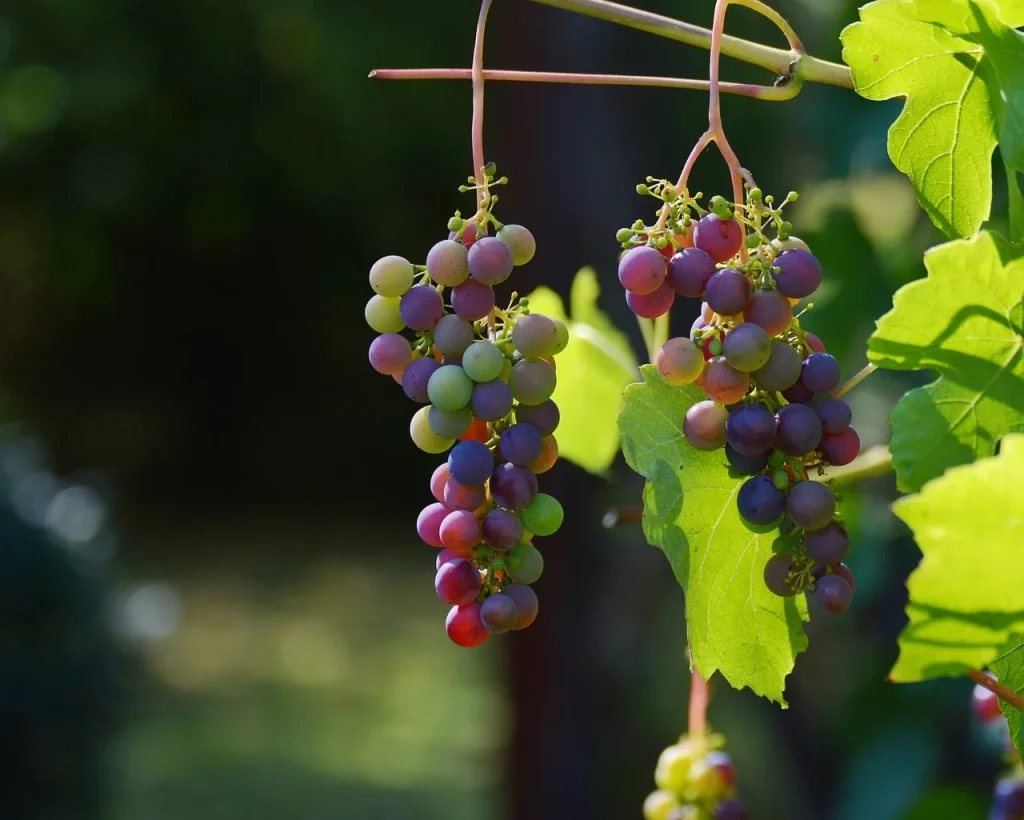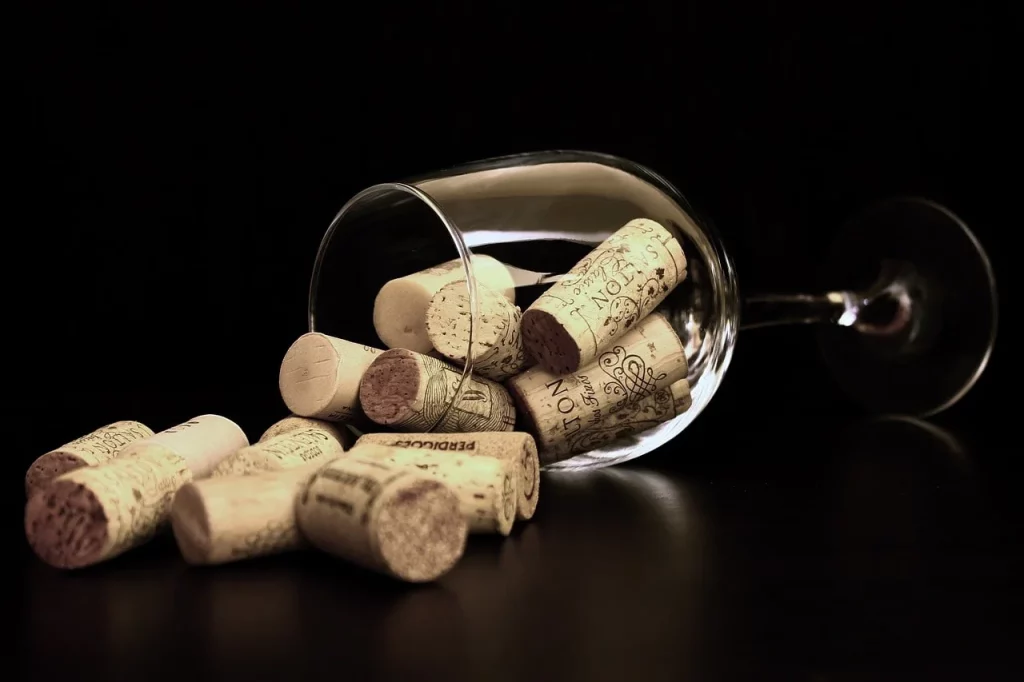Wine. It’s the elixir of celebration, the companion to quiet evenings, and a beverage steeped in history. From ancient Egyptian pharaohs clinking golden goblets to modern day cheers around the table, wine has woven itself into the fabric of our lives. But how much do you really know about this beloved drink?
Dive into our treasure trove of 50 fascinating wine facts, and you might just surprise yourself (and your friends!) with your newfound knowledge. So, tell me, what’s your most burning question about wine? Is it the science behind those swirling tannins, the secret to deciphering a cryptic label, or maybe the wildest wine story you’ve ever heard? Let’s uncork these mysteries together!
Wine is bottled poetry.
Robert Louis Stevenson
Wine Facts
Think you know your Cabernet from your Chardonnay? Let’s put your knowledge to the test! Dive into a world of fascinating facts. But remember, a true wine expert devours every detail, so pay close attention – there’s a quiz waiting at the bottom to crown the ultimate grape geek!
- The oldest known winery was discovered in Armenia, dating back to 4100 BCE.
- A single bottle can contain grapes from over 1,000 vines.
- Wine barrels are crafted from oak because it adds unique flavors to the wine, such as vanilla, spice, and smoke.
- The world’s oldest bottle of wine, called the Speer of Speyer, is over 1,650 years old and was found in a Roman tomb.
- There is an actual phobia of wine called oenophobia.
- Vintage wine refers to the year the grapes were harvested, not the year of bottling.
- The largest wine producer in the world is Italy, closely followed by France and Spain.
- A “cork-tease” is someone who constantly talks about the wine they will open but never does.
- Judges at wine competitions can sample up to 150 wines per day.
- The tradition of clinking glasses was started to scare away evil spirits.
- Red wines are red because fermentation extracts color from the grape skins.
- White wine can be made from red grapes by quickly removing the skins.
- Champagne bubbles are caused by yeast fermentation inside the bottle.

- The pressure inside a champagne bottle is three times that of a car tire.
- A sommelier is also known as a wine steward.
- Ice wine is made from grapes that have been frozen while still on the vine.
- The fear of wine running out sparked the creation of the world’s largest wine bottle, which holds 3,094 liters.
- Napoleon Bonaparte is said to have opened champagne bottles with his saber.
- Wine tasting engages more of your brain than any other behavior, according to scientists.
- There are over 10,000 varieties of wine grapes in the world.
- A small amount of wine can help improve your cholesterol levels.
- The color of the wine tells you about its geographical origin.
- A “butt” is an old measurement for a barrel of wine, equating to 477 liters.
- The custom of bumping glasses with a “cheers” greeting was designed to exchange liquids to prove that neither drink was poisoned.
- The ancient Romans believed that seasoning wine with garlic would make it healthier.
- During the 19th century, collectors of rare wines would melt sealing wax into the bottles to ensure authenticity.
- The first recorded instance of bottled wine dates back to the 17th century in France.
- Wine can be blue; this color is achieved by dyeing white wine with a pigment found in grape skins.

- Thomas Jefferson was an avid wine collector and the third President of the United States.
- There’s a wine library in France that has kept thousands of bottles for centuries to study the aging process.
- Unopened wine has been recovered from shipwrecks without being spoiled, thanks to the cool, dark, and stable underwater conditions.
- Before thermometers, winemakers would use a frog in the cellar to determine the right temperature for fermenting wine.
- Some red wines are considered beneficial for your health due to a compound called resveratrol, which has antioxidant properties.
- The world’s most ancient bottle of wine, not yet opened, is nearly 1700 years old and stored in a German museum.
- Wine was discovered about 6,000 years ago in the Middle East.
- The largest wine cellar in the world stretches over 150 miles in Moldova.
- Historically, monks were among the best winemakers, preserving and innovating wine-making techniques through the Middle Ages.
- Wine bottles are traditionally 750ml because that is the average lung capacity of a glass blower.

- Venus was the Roman goddess associated with wine and its transformative effect from grapes to wine, symbolizing both physical and spiritual intoxication.
- The term “toasting” originated in ancient Rome, where a piece of toasted bread was dropped into wine to soften unsavory flavors.
- A glass of wine a day was the ration for sailors in the British Royal Navy until the practice was abolished in the 1970s.
- Wine sediment is often referred to as “legs” or “tears” when it clings to the side of the glass.
- Micro-oxygenation, a process of introducing oxygen to wine, can mimic the aging process, making wines mature faster.
- The “angel’s share” is the portion of wine that evaporates from the barrel during the aging process.
- Wines labeled Old World come from countries where wine-making first originated, such as Italy, France, and Spain.
- Wine stored in cooler conditions ages more slowly, preserving its complexity and character.
- Scientists have found that the shape of a wine glass can impact the flavor and aroma of the wine.
- A super-taster has more taste buds than average and can detect subtle flavors in wine that others cannot.
- Contrary to popular belief, not all wines improve with age; most are meant to be consumed within a few years of bottling.
- The term “oenology” refers to the science of wine and winemaking, showcasing the blend of art, science, and history in each bottle.
Wine Myths

So, you’ve soaked up some fun facts about wine and learned about its fascinating history. Buckle up now, because we’re about to debunk some common misconceptions and set the record straight in the wonderful world of wine.
- Sulfites Cause Wine Headaches
It’s a common misconception that sulfites are the main culprits for headaches. In reality, factors such as histamines and the alcohol content are more likely responsible. Sulfites are used to preserve wine and are found in many other foods without causing headaches. - Older Wines Are Always Better
This isn’t always true. Most wines are made to be enjoyed within a few years of their production. Only a small fraction of fine wines benefit from long-term aging, where they develop more complex flavors. The improvement with age is highly dependent on the type and quality. - Red Wine Should Be Served at Room Temperature
The ideal serving temperature for red wine is often cooler than modern room temperatures, typically around 60-68°F (15-20°C). Serving it too warm can mask its flavors and aromas, while a slightly cooler temperature can enhance its characteristics. - Wine Glasses Don’t Make a Difference
The shape of a wine glass can significantly affect the tasting experience. Different designs can enhance the aroma and flavors of specific types. For example, wider glasses are better for red wines, as they allow them to breathe and develop more flavor. - All Wines Improve with Decanting
While decanting can benefit many wines by allowing them to oxygenate and release their aromas, not all of them require it. Young, robust wines often improve with decanting, but older, delicate ones might lose their subtle flavors if decanted for too long.
No products found.
Wine Quotes

Wine has held humanity’s heart captive for millennia. As Socrates declared, “Wine brings good cheer with it.” Below, I am sharing with you some of my favorite quotes. Feel free to share yours so I can add them to the list as well.
In victory, you deserve Champagne. In defeat you need it.
Napoleon Bonaparte
Napoleon Bonaparte’s words reflect the dual role of Champagne as both a symbol of triumph and a solace in times of sorrow, highlighting its significance in both celebration and consolation.
Wine makes every meal an occasion, every table more elegant, every day more civilized.
Andre Simon
Andre Simon, a noted wine connoisseur and writer, underscores the transformative power of wine to elevate the ordinary to something special, enhancing the cultural and social experience of dining.
Wine is the most healthful and most hygienic of beverages.
Louis Pasteur
Coming from Louis Pasteur, a renowned scientist known for his groundbreaking work in microbiology and fermentation, this quote emphasizes the health benefits and purity of wine, endorsing its consumption.
Penicillin cures, but wine makes people happy.
Alexander Fleming
Alexander Fleming, the discoverer of penicillin, contrasts the medicinal cure of penicillin with the emotional joy brought about by wine, acknowledging the unique place of wine in human happiness and well-being.
Age is just a number. It’s totally irrelevant unless, of course, you happen to be a bottle of wine.
Joan Collins
Joan Collins, an actress known for her wit and longevity, humorously points out the importance of age for wine, where unlike in human life, the number of years a wine has aged can significantly influence its value and character.
Wine FAQ

Still thirsty for knowledge? Before you take the quiz, dive into our FAQ section to polish your oenological expertise. Remember, these next questions are where true mastery awaits!
- Which wine has the highest alcohol content?
Fortified wines, like Port, Sherry, and Marsala, often have the highest alcohol content in the wine world, typically ranging from 17% to 20% ABV (Alcohol By Volume). These wines are “fortified” with a distilled spirit, usually brandy, which bumps up the alcohol level. - Can wine freeze?
Yes, it can freeze due to its water content, but it freezes at a lower temperature than water because of the alcohol. This usually happens around 15-20°F (-9 to -6°C). Freezing wine might push the cork out or crack the bottle, and it can also change its flavor and texture, so it’s best to store it properly to avoid freezing. - Are wine corks compostable?
Absolutely! Wine corks are made from the bark of cork oak trees, making them completely natural and biodegradable. You can compost them, but remember, they break down slowly. Some people even get creative, using old corks for DIY projects or gardening purposes. - Can wine go bad?
Yes, it can go bad. Once opened, wine is exposed to air and begins to oxidize, which can alter its taste and aroma. Generally, an opened bottle of white or rosé wine can last about 3-5 days in the fridge with a cork, while red wine can last about 3-7 days. Proper storage is key to prolonging a wine’s life. - Are wine bottles recyclable?
Yes, they are recyclable. They’re made of glass, which can be recycled indefinitely without losing purity or quality. Just rinse them out and remove any non-glass elements (like the cork or labels, if required by your local recycling program) before recycling.
No products found.
Wine Quiz

Welcome to the wine quiz, where your knowledge will be tested, and the only thing more bitter than a bad wine will be the realization that you didn’t get a single question right. Beware, or you might just turn into a grape!
Conclusion
Let’s raise a glass to the end of this voyage through the captivating world of wine. Hopefully, your palate feels tantalized, your mind is brimming with fascinating facts, and your understanding of this magnificent beverage has expanded. Remember, wine is more than just a drink; it’s a cultural tapestry woven from history, passion, and human ingenuity.
So, the next time you swirl a glass, let the aromas transport you to sun-drenched vineyards, imagine the hands that nurtured the grapes, and appreciate the journey that brought this liquid magic to your lips. Cheers!
2 Sources Used For This ArticleA large glass of real wine, by the bottle – Usual Wines



3 Comments
Are you sure that France is at the list of top producers?
Hello there.
I used statistics from Statista which I think are correct.
The top 5 countries according to them are Italy, France, Spain, United States and Australia.
Can red wine give you diarrhea?